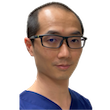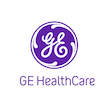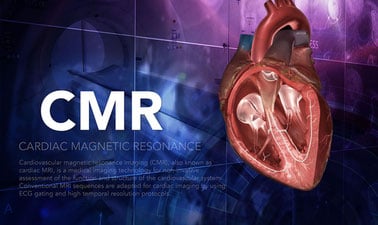- Level Foundation
- Ratings
- Course by The University of Hong Kong
- Total students 5,341 enrolled
-
Offered by

About
GOLD Award Winner of QS Reimagine Education Award 2021 in Life Sciences!
This course is for radiologists, cardiologists, radiographers/ technologists and other health professionals who want to learn more about cardiovascular magnetic resonance imaging (CMR). Previous experience in CMR is not required.
The learning outcomes are:
- Understanding of the basic CMR physics and sequences in order to better understand how to acquire cardiac images and how to assess commonly used sequences (eg. Steady state free precession sequence, phase contrast to measure blood flow, T2* and magnetic resonance angiography).
- Understand the safety profile and risks of contrast agents used in CMR.
- Ability to analyse CMR images at SCMR level 1 competency such as stress perfusion, late gadolinium enhancement and post-processing for ventricular function.
- Attain hands-on experience to analyse real clinical cases from a database of 50 clinical cases, using dedicated CMR software, as well as further supplementation through our web forum.
- Basic understanding of future developments in the CMR field such as exercise CMR, artificial intelligence, feature tracking, T1 and T2 mapping.
- Provide career advice and thoughts from well-known CMR experts through exclusive interviews.
A MOOC on cardiac computed tomography (CT) is also available on this platform in order to introduce you to this complementary cardiovascular imaging technique.
What you will learn
- Introduction of advanced techniques such as T1 and T2 mapping, feature tracking and exercise CMR.
- The different sequences used in cardiac MRI imaging and the physics behind these sequences.
- How to acquire the cardiac imaging planes.
- How to assess the ventricular function, late gadolinium enhancement and T2* for iron overload.
- Understanding the normal appearances of the pericardium, heart muscle, valves and vasculature.
- Understand how different cardiac pathologies result in different forms of cardiac remodelling.
- An overview of the main cardiac diseases, such as coronary artery disease, cardiomyopathies (eg. hypertrophic cardiomyopathy, dilated cardiomyopathy), valvular heart disease, cardiac tumours and congenital heart disease.
- 简介高级技术,例如T1和T2分布图,特征跟踪和运动负荷CMR。
- 心脏MRI成像中使用的不同序列及其物理背景知识。
- 心脏成像平面的获得方法。
- 如何分析心室功能、延迟强化以及利用 T2* 评价心肌铁负荷。
- 了解心包、心肌、瓣膜以及血管的正常表现。
- 明白不同的心肌疾病如何造成不同的心脏形态改变。
- 常见心脏疾病的概述,例如冠状动脉疾病,心肌病(例如肥厚性心肌病,扩张型心肌病),心脏瓣膜病,心脏肿瘤和先天性心脏病。
- 通过网络研讨会和论坛,了解并体验如何使用专用软件分析心脏图像。
- 利用正常志愿者和真实病例学习心室功能、血流和T1 /T2 mapping分析方法。
Skills you learn
Syllabus
WEEK 1: Sequences, Acquisition, Contrast Agents and Basic Physics
This MOOC will begin with a course on the common cardiac MR sequences, the physics and application behind those sequences. We will also learn how to acquire cardiac MR imaging planes.
WEEK 2: Cardiomyopathies, LGE and T2
In this section, we will teach you how to assess and analyse ventricular function, LGE and T2*. We will also give you an overview of the main common cardiac diseases, such as coronary artery disease and cardiomyopathy.
WEEK 3: Coronary Artery Disease, Aorta, Pericardium and Valves
CMR techniques such as stress perfusion imaging, CMR sequences and methods for assessing aortopathy, pericarditis with or without constriction and valvular disease will be covered in this section.
WEEK 4: Congenital Heart Disease and Paediatric Scanning
This section will cover the role of CMR in congenital heart disease. You will also learn scanning techniques and common indications for babies and children.
WEEK 5: Advanced and Future Developments
In the last section, we will cover exciting advances in cardiac MRI, such as exercise CMR, T1/T2 mapping, artificial intelligence and feature tracking.
Clinical Cases:
You will also have hands-on experience to review clinical cases (eg. stress CMR with x-ray catheter angiography correlation) with tutorial videos every week.
第1周:序列,图像采集,造影剂和基础物理
首先介绍常见心脏MR序列及其物理和基础应用。我们还将学习如何获取心脏MR成像平面。
第2周:心脏疾病,延迟强化和T2*图像分析
在本节中,我们将教您如何评估和分析心室功能,延迟强化和T2 *。我们还将介绍常见的心脏疾病,如冠状动脉疾病和心肌病。
第3周 冠狀動脈疾病,主動脈,心包和瓣膜
本節將介紹CMR技術,例如负荷灌注成像,CMR序列以及評估主動脈病變,有或沒有缩窄性改变的心包炎,以及瓣膜疾病。
第4周:先天性心脏病及儿童CMR扫描
本节将介绍先天性心脏病以及CMR在其中的应用。我们还将学习相关的扫描技术,以及婴儿和儿童的常见适应症。
第5周:前沿和未来发展
在最后一节中,我们将向您介绍CMR的一些令人振奋的进展,例如运动负荷成像,T1/T2 mapping ,人工智能和特征追踪。
临床病例:
您还将有机会通过网络研讨会和网络论坛讨论每周练习的临床病例(例如 负荷灌注CMR并结合相应冠状动脉X线造影结果)。
Auto Summary
Dive into the pioneering world of cardiac magnetic resonance (CMR) with the first-ever MOOC dedicated to this advanced imaging technique. Perfect for those in the Science & Engineering field, this foundational course delivers essential knowledge through concise videos, downloadable case studies, and interactive web forums. Offered by edX, the course is accessible in multiple languages, catering to a global audience. Ideal for professionals and beginners alike, you can subscribe through either the Professional or Starter options to begin your journey into mastering CMR physics, scanning sequences, and image analysis. Join now and elevate your expertise in cardiac imaging!

Dr. Ming-Yen Ng

Dr. Varut Vince Vardhanabhuti

Guest speaker: Dr. Chiara Bucciarelli-Ducci

Guest speaker: Dr. Carmen WS Chan

Guest speaker: Dr. Charles Hing-Chiu Chang

Guest speaker: Dr. Stephen Chi-Wai Cheung

Guest speaker: Dr. Kenneth KY Cheung

Guest speaker: Dr. Calvin Woon-Loong Chin

Guest speaker: Dr. Vanessa M. Ferreira

Guest speaker: Dr. Elsie Nguyen

Guest speaker: Dr. Mini Pakkal

Guest speaker: Prof. Dudley Pennell

Guest speaker: Prof. Steffen E. Petersen

Guest speaker: Dr. Shihua Zhao

Sponsor 1

Sponsor 2

Sponsor 3

Sponsor 4


